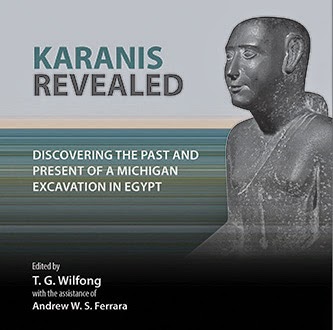T.G. WIlfong, A.W.S. Ferrara, Karanis Revealed: Discovering the Past and Present of a Michigan Excavation in Egypt
Karanis Revealed: Discovering the Past and Present of a Michigan Excavation in Egyptedited by T.G. Wilfong and Andrew W.S. Ferrara
200 pages (152 illus.)
Kelsey Museum Publication, 7
Kelsey Museum Publications
Language:
English
Paperback (July 2014)
ISBN-13 9780974187396
ISBN-10 0974187399
$24.95
Not yet published
The 1924-1935 University of Michigan excavations at the Graeco-Roman period Egyptian village of Karanis yielded thousands of artifacts and extensive archival records of their context. The Karanis material in the Kelsey Museum of Archaeology and the University of Michigan Library Papyrology Collection forms a unique body of information for understanding life in an agricultural village in Ptolemaic and Roman Egypt. In 2011 and 2012, the Kelsey Museum of Archaeology presented the exhibition Karanis Revealed in two parts, using artifacts from the excavations and archival material to explore aspects of the site and its excavation in the 1920s and 1930s. As preparation for the exhibition progressed, it became clear that part of the story of the Michigan Karanis expedition lay in the current and ongoing research on the material it yielded by curators, faculty, staff, and students from the University of Michigan. Such projects include new work on known artifacts and papyri, the discovery or rediscovery of important unpublished artifacts and archival sources, new field research at Karanis, and even sonic investigations of the site and its history. The present volume summarizes the recent exhibition and presents some of the new research that helped inspire it.
Preface
Introduction
Karanis in the Kelsey Museum Archives (Sebastián Encina)
Notes on Three Archival Sources for the Michigan Karanis Excavations: The Record of Objects Books, the Division Albums, and the Peterson Manuscript (T. G. Wilfong)





